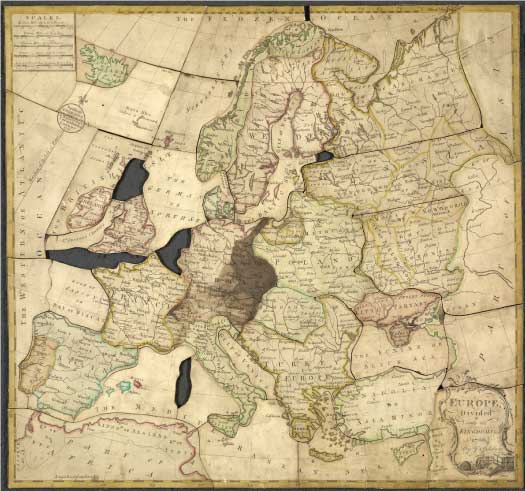While many parents realise that jigsaw puzzles can play an important role in the development of their children, they may not fully understand why this is so.
The thing with jigsaw puzzles is, it will never get boring, for there are endless images to choose from, not to mention levels of difficulties. It’s safe to say that almost every one of us has had the chance to play with a jigsaw puzzle at some point in our life. For children, even very young ones, puzzles work wonders to exercise their minds, challenge their way of thinking, and even help in developing important motor skills. Here are some ways jigsaw puzzles help in the overall development of children.
Helps improve problem-solving skills
Watch a child who is busy playing, either by himself or with others, and you’ll notice that there are bound to be little ‘situations’ that need some innovative thinking to get around. Children and toddlers must use their imagination and develop strategies on how to solve problems and reach their desired goals. In regards to this, completing even the simplest jigsaw puzzle is critical for their self-esteem, for it involves searching for solutions, the use of reasoning, and developing problem-solving skills — all of which will be useful later on in life too.
Aids in building hand-eye coordination
Almost every one of life’s important daily tasks, from buttoning a shirt to cutting up ingredients for cooking a meal, and hundreds of things in between, require the ability to coordinate what the eyes are looking at with what the hands are supposed to do. There is no better way for young children to hone this ability than by means of putting together the pieces of a jigsaw puzzle. They’ll have to do this repeatedly too, till they find the right bits that fit — and in doing so, enhance their awareness on what to look for in a particular puzzle piece.
The honing of fine motor development
Fine motor skills are very important in a young child’s development, for without them, hand-eye coordination would not mean much. Learning these skills at an early stage will eventually assist children in important schooling tasks such as writing, drawing, and even playing musical instruments. The acts of using one’s fingers to pick up a puzzle piece, and trying to fit it into space by turning it around, etc, serves well to hone these important fine motor skills.
Fun fact
This jigsaw named ‘The Parable of the Sower’ was created in 1870. Only the outside pieces interlocked and the quality of the print is poor by modern standards.
Builds better cognitive skills
Jigsaw puzzles are useful in helping children understand how to solve issues in an organised manner. Their awareness of color, design or pattern, and shape (of the puzzle pieces) and how they relate to each other in completing the whole puzzle are important as practice on how to begin solving bigger, more complicated issues as they get older.
Self-esteem and confidence
Children, like adults, enjoy a sense of accomplishment when they get to tackle an issue, such as an unsolved jigsaw puzzle. Overcoming the challenges involved in completing the piece gives them a sense of pride and self-esteem. It also gives them the boost of confidence they need to tackle bigger challenges that may come their way. It reinforces the fact that with patience and perseverance, problems can be solved.

A quick peek into the history
The first person to think of cutting up a picture into intersecting pieces was a man named John Spilsbury, an 18th-century British cartographer. He mounted a map of England on a thin sheet of mahogany board and used a handheld fretsaw to cut around the county boundaries. He called it ‘dissected puzzle’ instead of the jigsaw, but that’s how the idea of this world-renown puzzle toy was born. Mr. Spilsbury then boxed up those cut-up pieces and sold them for children to assemble. During the next few decades, others adapted his ideas and introduced historical scenes to complement map subjects before moving on to a larger scope of images.
In the old days, puzzles were made almost exclusively for wealthy families. First, they were made with only education in mind. As time went by, society embraced jigsaw puzzles to the extent that they became the favourite pastime, particularly amongst the well-to-do. By 1929, no high-end English dinner or tea parties could go without a jigsaw game as entertainment.
Today, there is very little that can be done to improve on the already perfect quality and cut of jigsaw puzzles around the world and innovative manufacturers have constantly found new images to thrill baffle and bemuse consumers, and this includes jigsaw puzzles for very young children as well.
Featured image source: iStock


